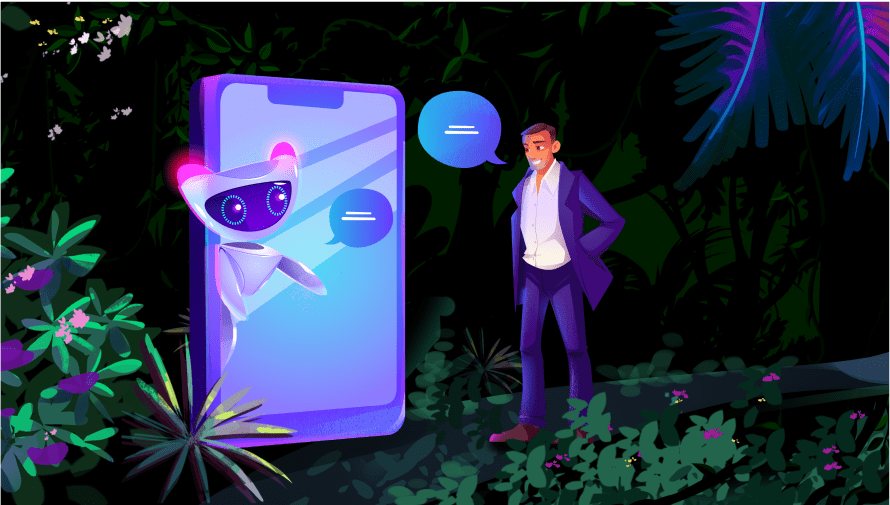Conversational user experience (UX) incorporates chat, voice, or other technologies to mimic natural human conversation. Essentially, it’s two-way communication between humans and robots.


Benefits of Conversation Design
A well-designed conversation AI system can be integrated into a website or app to interact with and convert more leads in a way that benefits both you and the user or customer. Some of these benefits include:
- Increased user engagement — Some users are more willing to engage with an easy channel of communication that feels natural and allows them to quickly tackle questions and problems on their own.
- Better self-service — A well-designed system understands the user and is contextually aware enough to guide them through the experience without human help.
- Lower agent costs — Agents can devote more energy and productivity to users with more complex needs, and there are fewer transfers when the AI is more intuitive.
- Faster response time — Conversation systems can respond instantly and can be available around the clock for users’ needs.
- Scalability — Insights taken from conversations can fuel a company’s growth by providing data-backed research straight from consumers.
Conversations are bound to psychology. Here are 7 principles for getting started with conversational design.
When designing conversations keep these seven things in mind:


1. Engage: Be responsive and poignant. Reply if not interrupting.
2. Recall: Be aware of context. Listen, don’t ask things you already know.
3. Anticipate: Be predictive when possible.
4. Adapt: Conversation is organic, it flows, it has a rhythm. It’s not mechanistic or rule based.
5. Reflect: Repeat important pieces of information to confirm user needs.
6. Pull: Use cues, directions, or instruction to steer the flow of the conversation.
7. Flow: If your service operates asynchronously, send users a simple message if no-one is online. If your service is synchronous (powered by a bot / machine) don’t bombard them when they send their first message.
The Future of Conversational UX
Experts across the tech world agree conversational UX is quickly developing and will grow in significance. Conversational systems are now mainly located in areas where it is convenient to be able to control things without needing your hands. In the future, experts predict conversational UX will be everywhere – even in areas where you may not necessarily need to use voice control.
Conversational systems will also become based off learning systems. Currently, conversational UX requires a designer because it is not a full learning system. Designers need to determine how the system should respond to each question or request, so they create a way to classify what the user said so the automated system can construct the correct response.
Automated systems will shift away from needing someone to identify how they should respond. They will eventually be able to determine a response independent of humans. Instead of designers, conversational systems will require people who fulfill roles more similar to teachers or coaches.
Technology: The Wave of the Future
There are still some hesitations about AI personalities and robotics, but it is clear people will be more likely to adapt to these new additions to society. Experts have predicted AI will soon be everywhere. Conversational systems are the wave of the future and will become a central part of daily life around the country. If you accept and adopt this new technology into your life, you may find yourself growing fond of the improvements and advancements it can provide.


